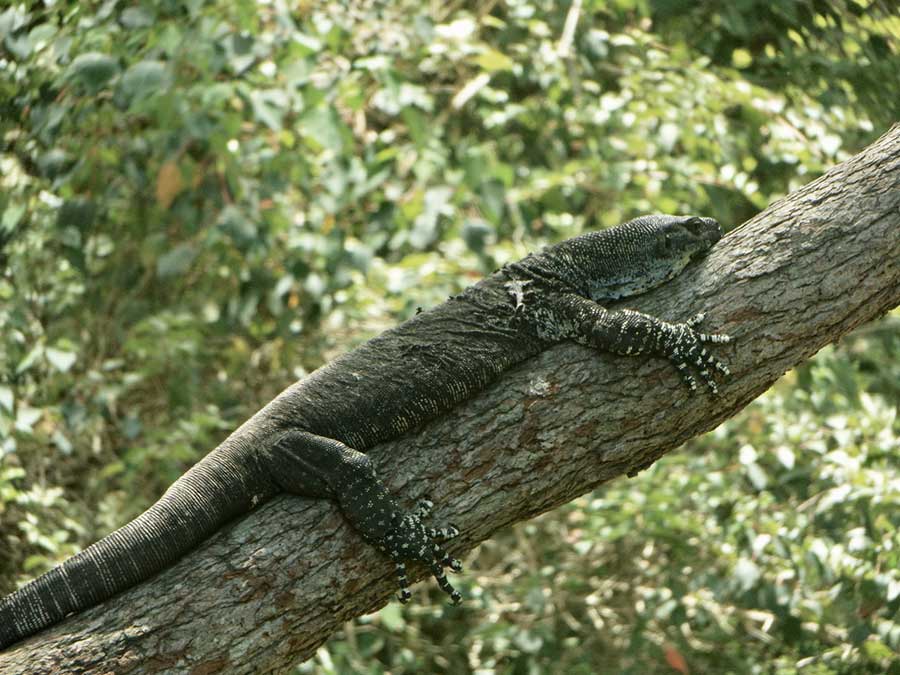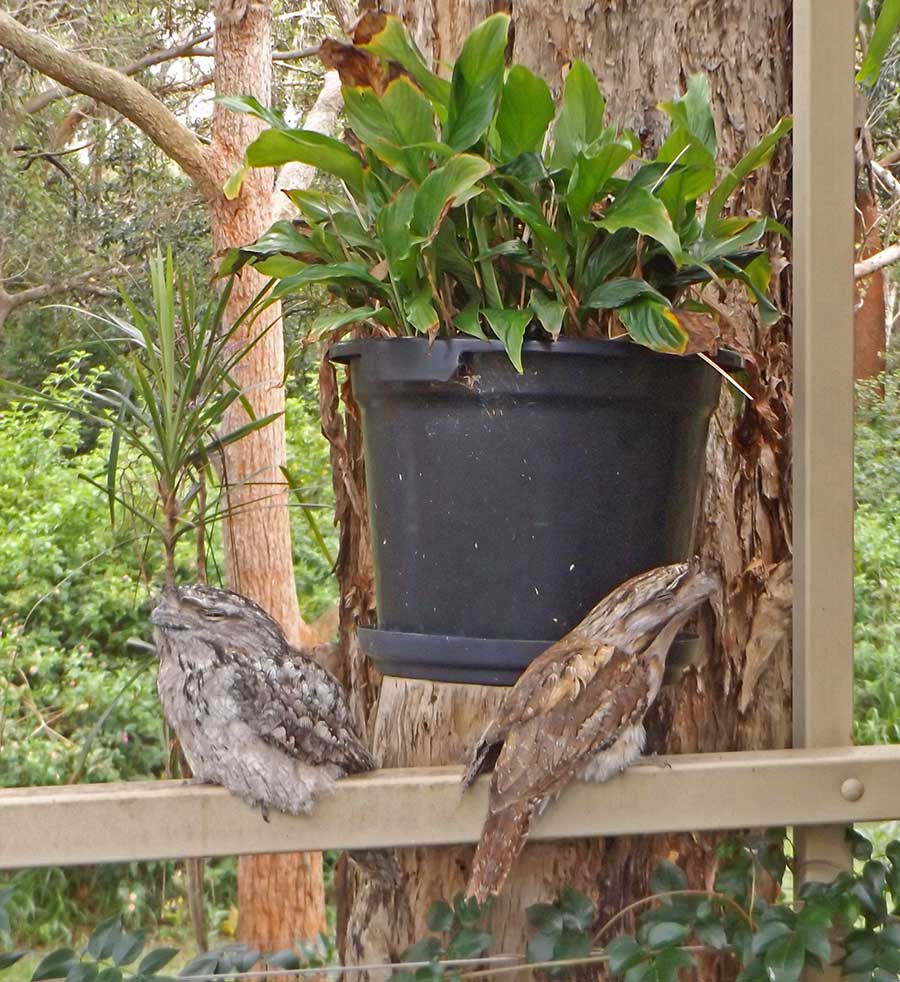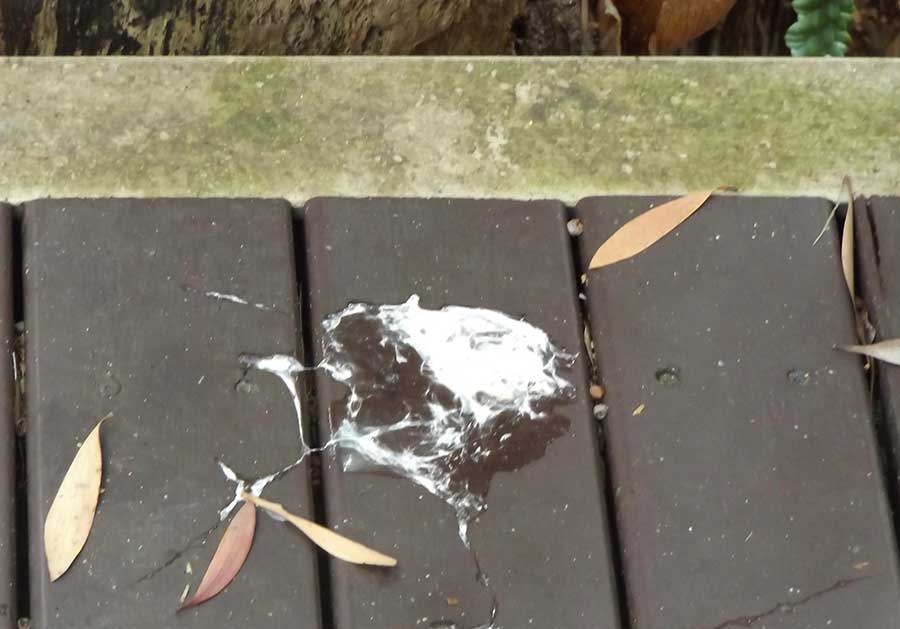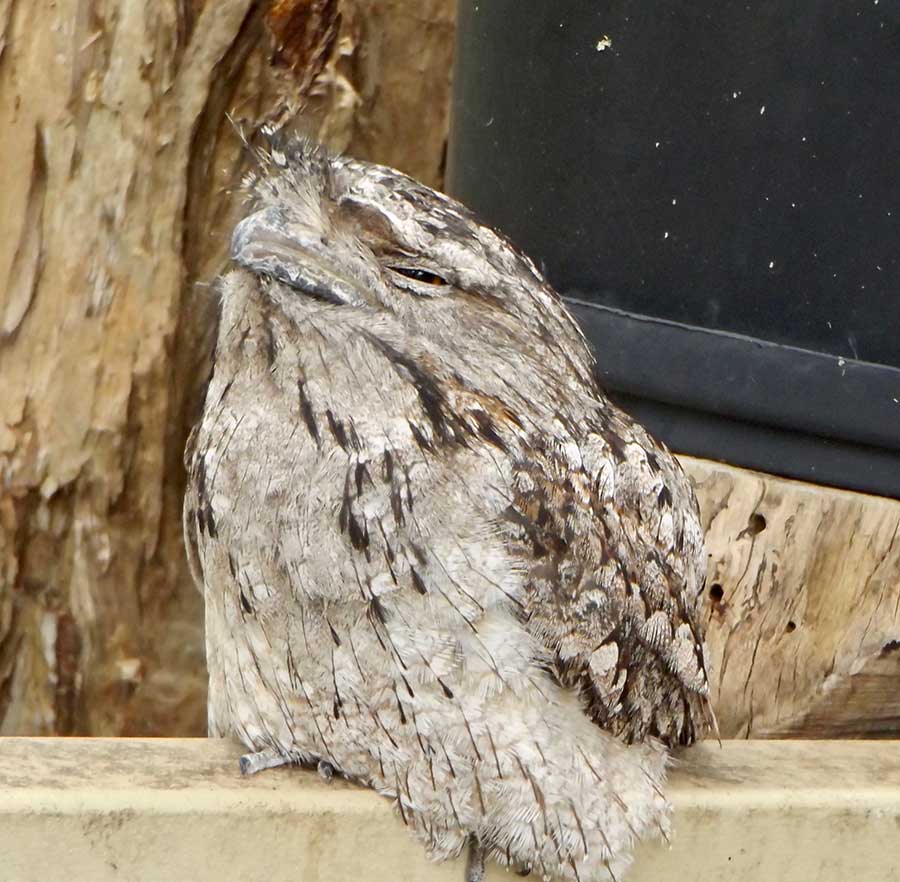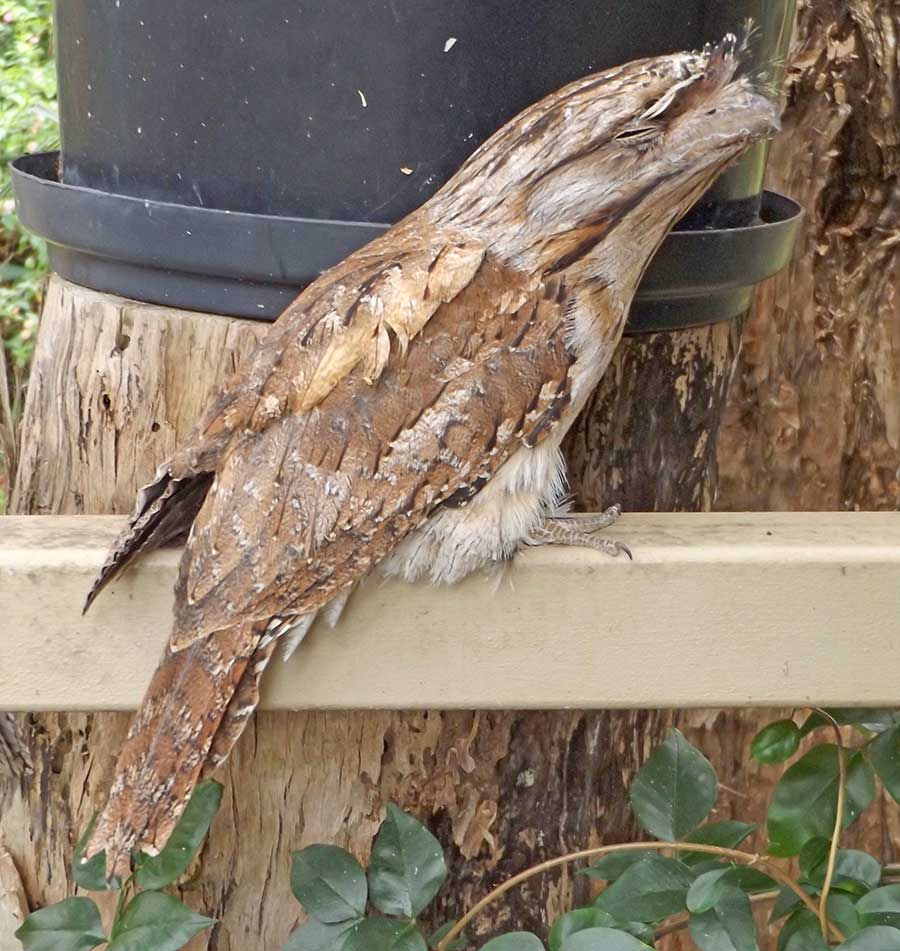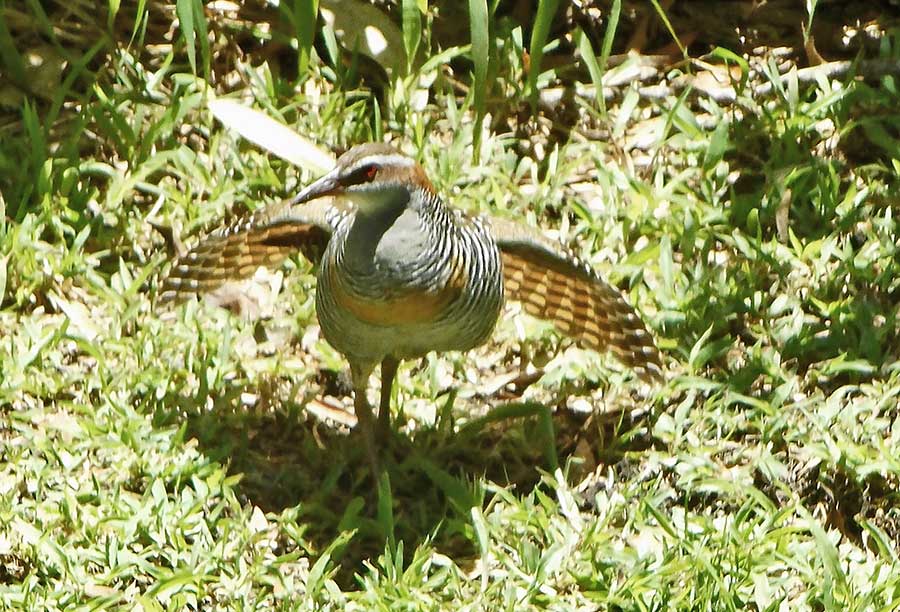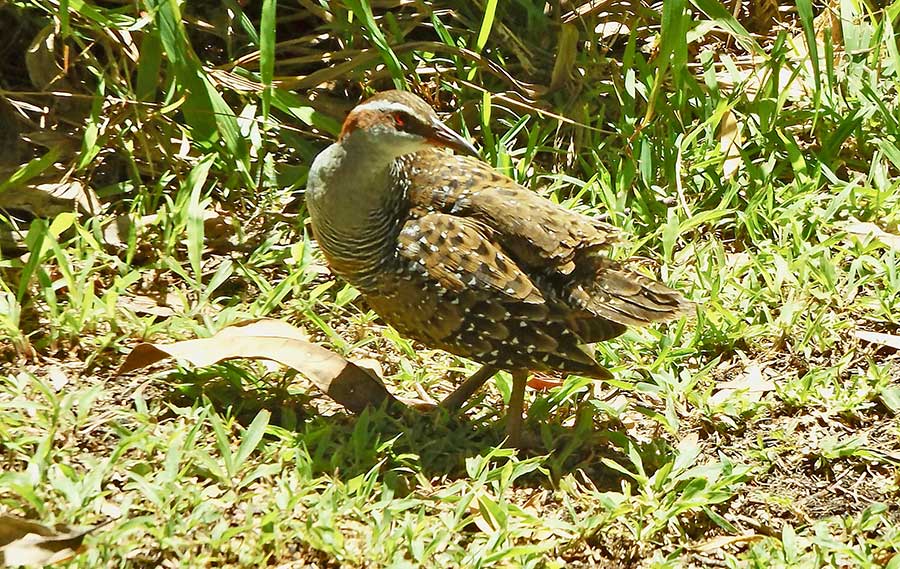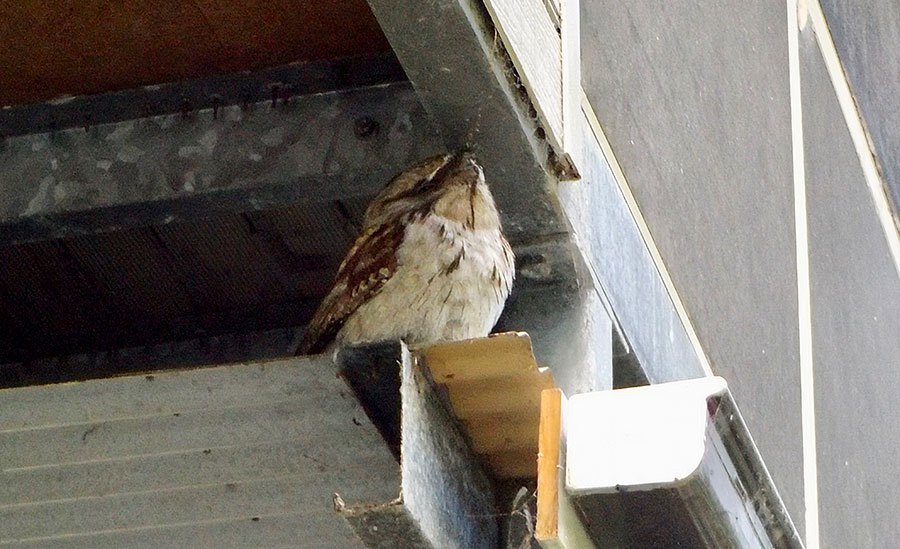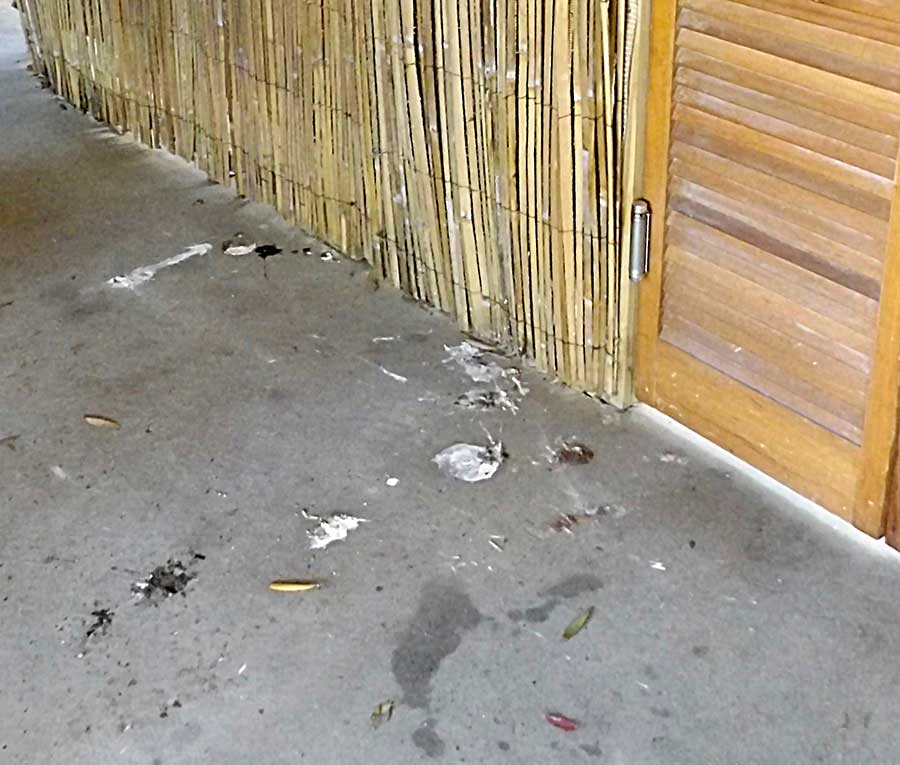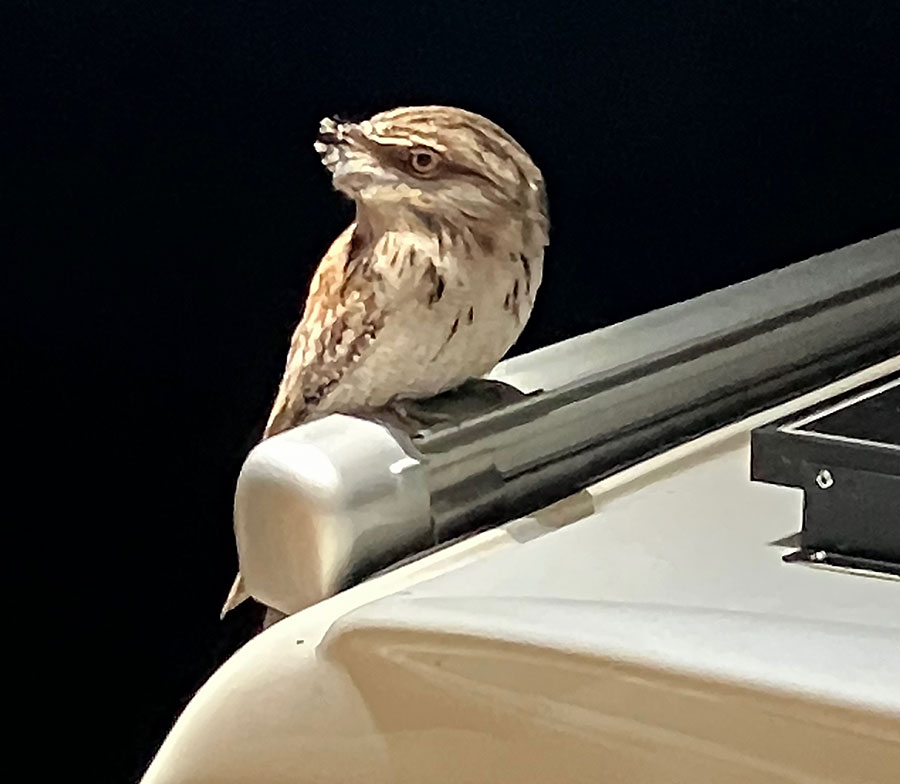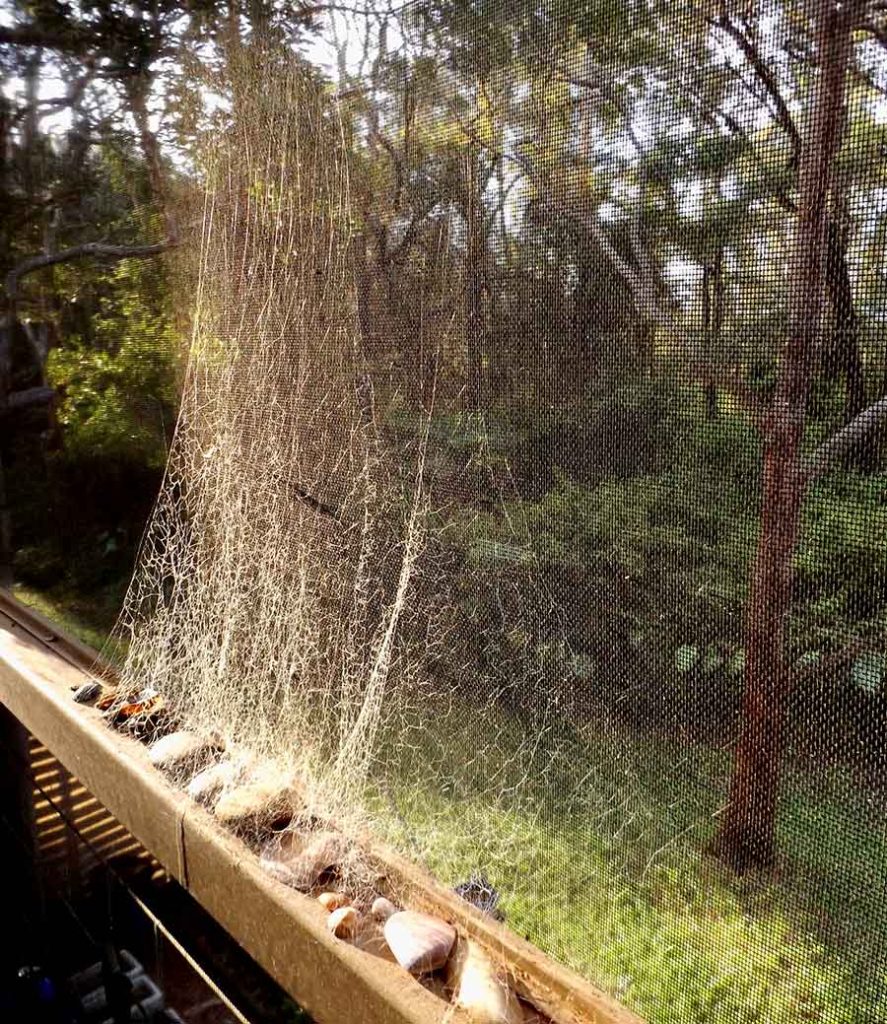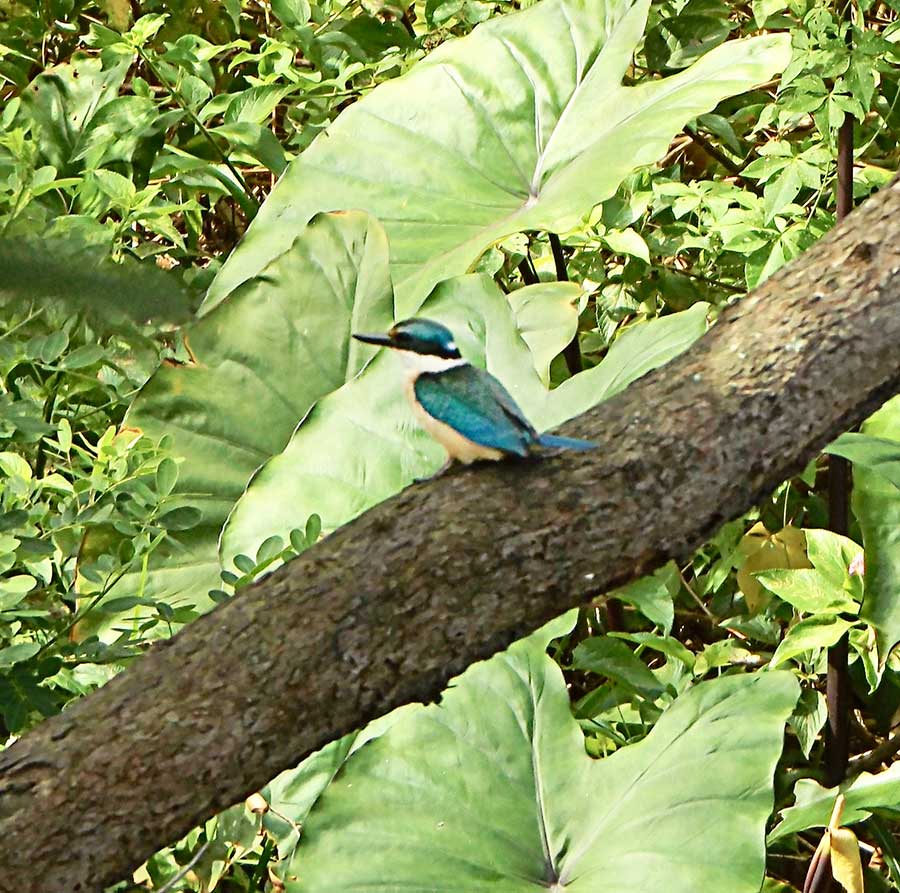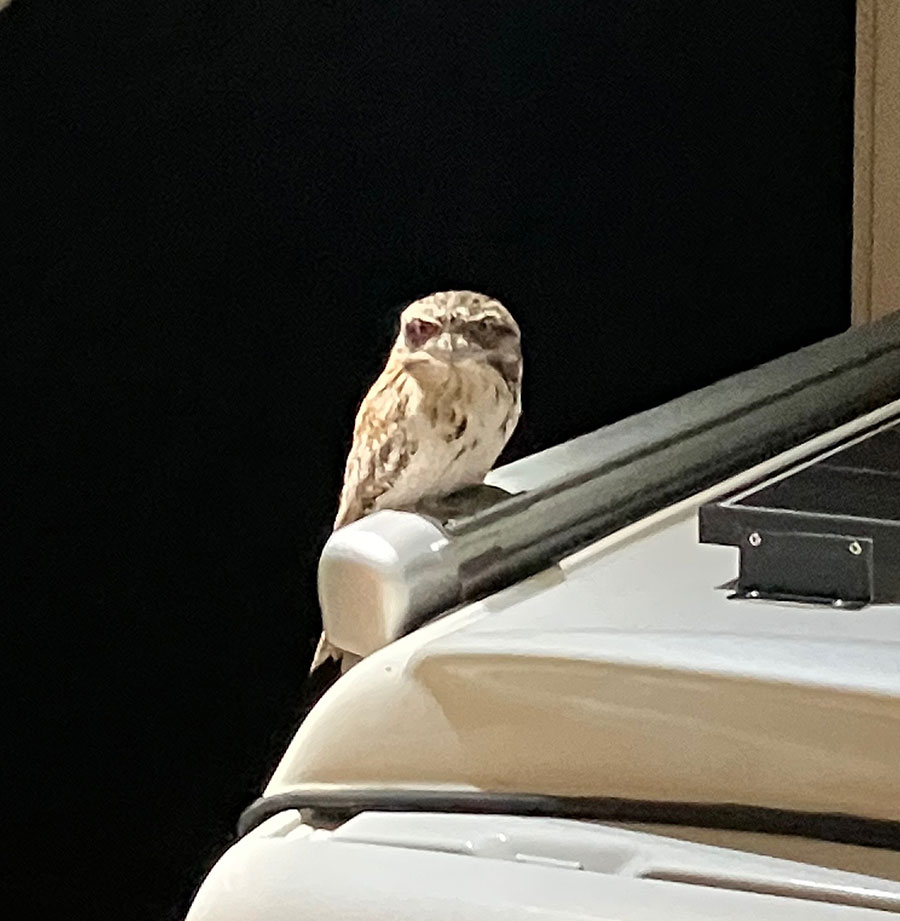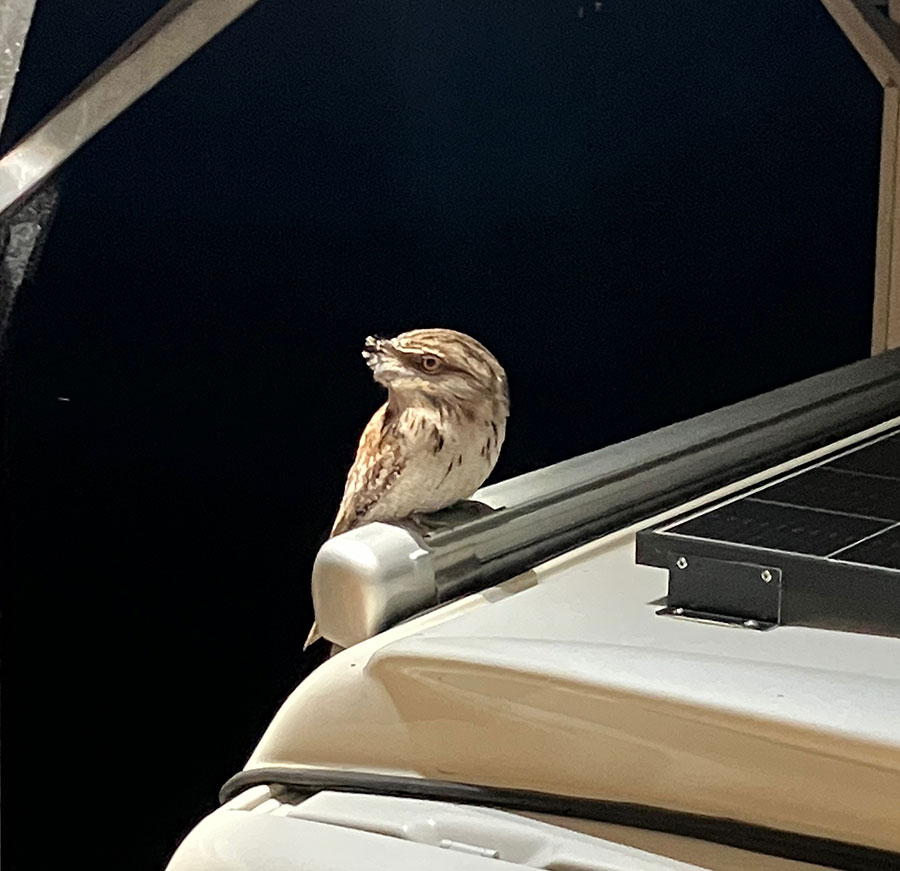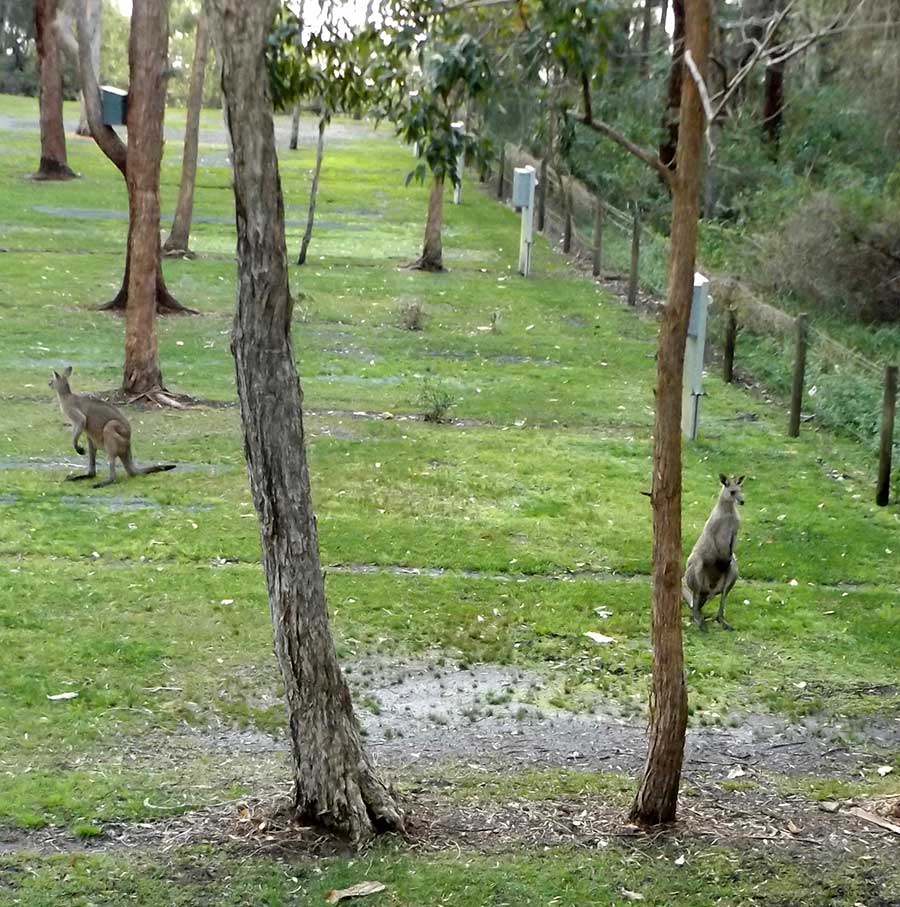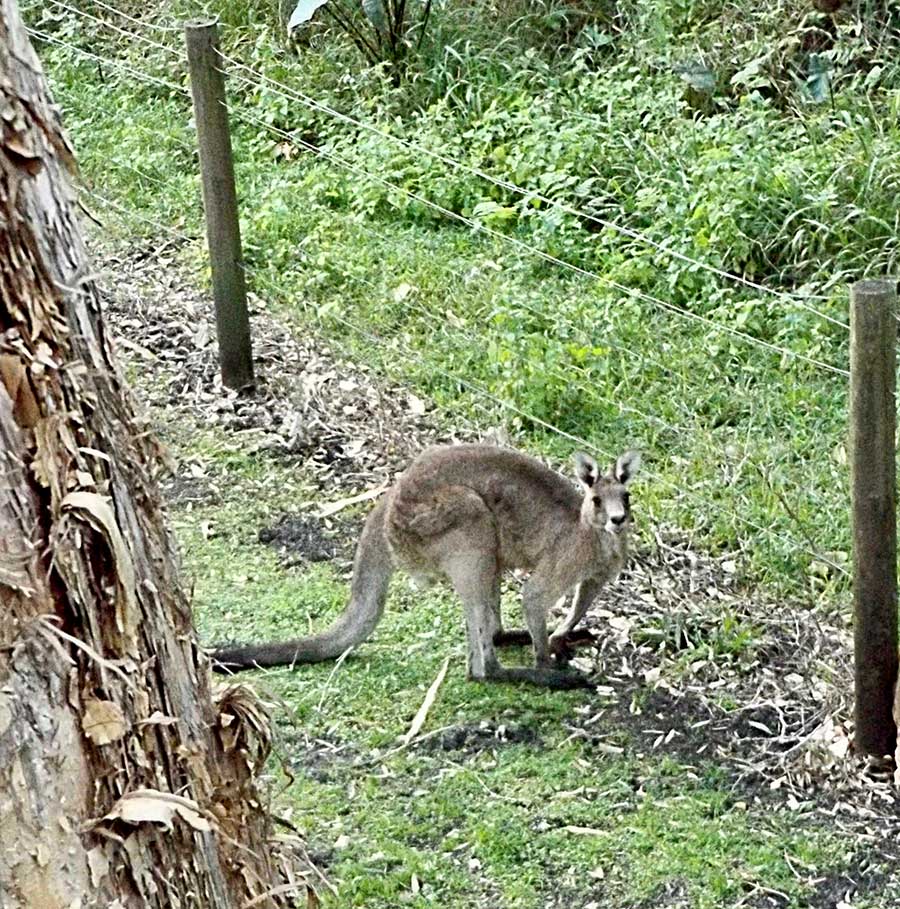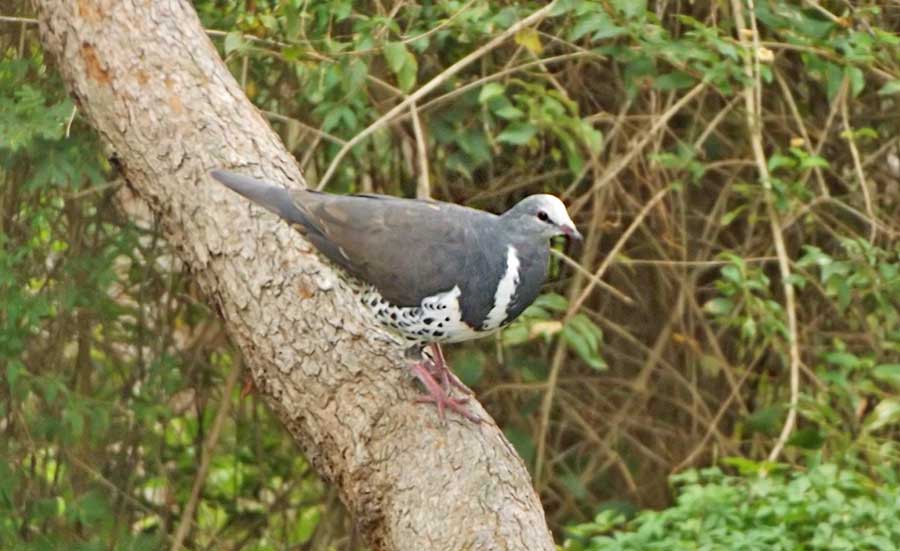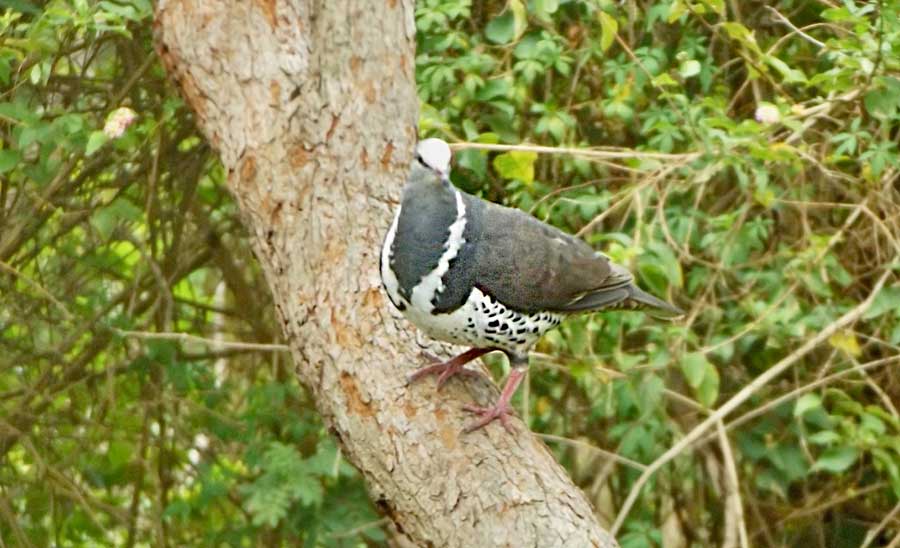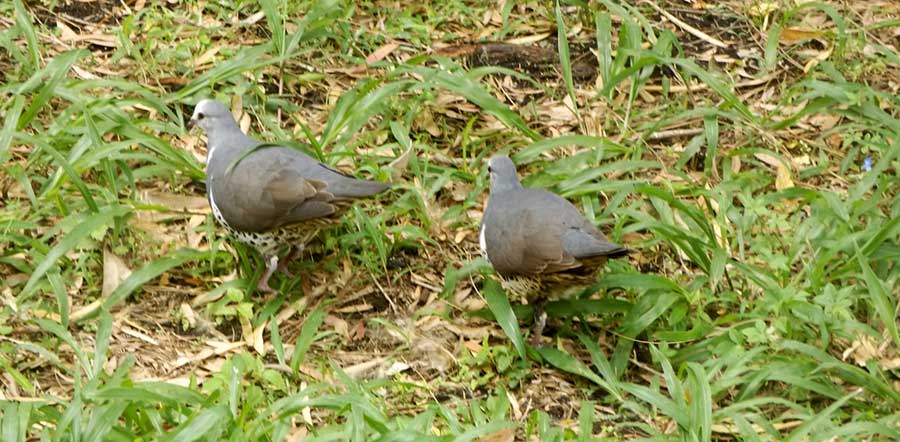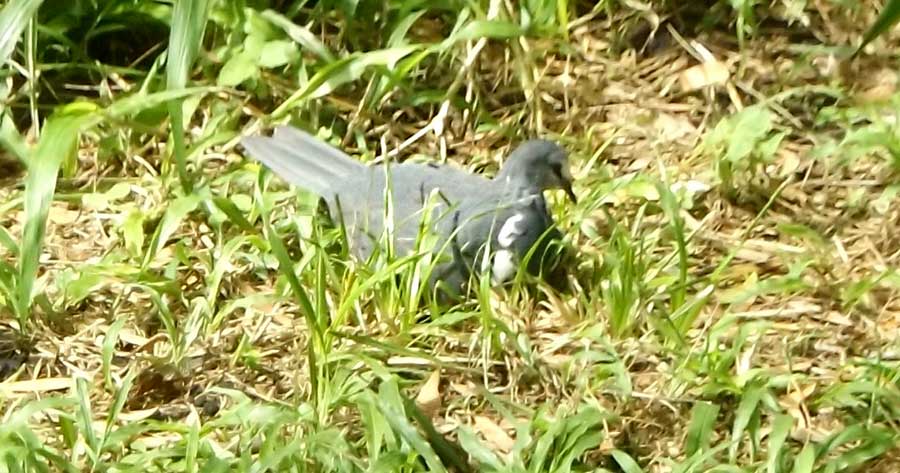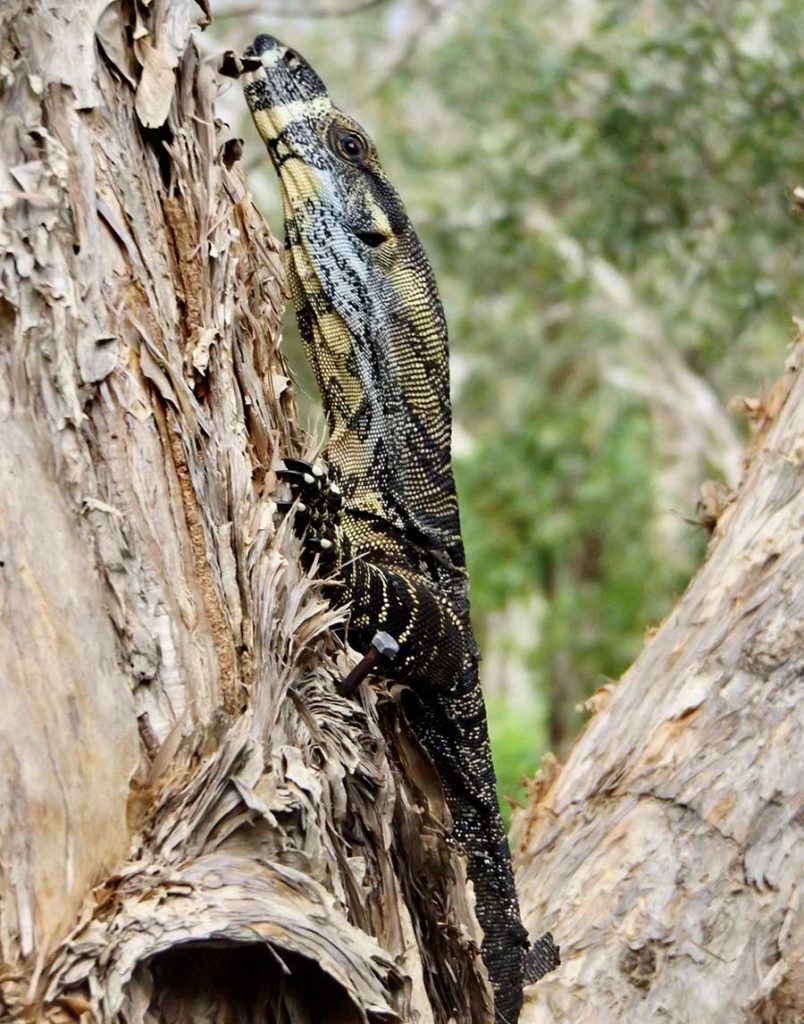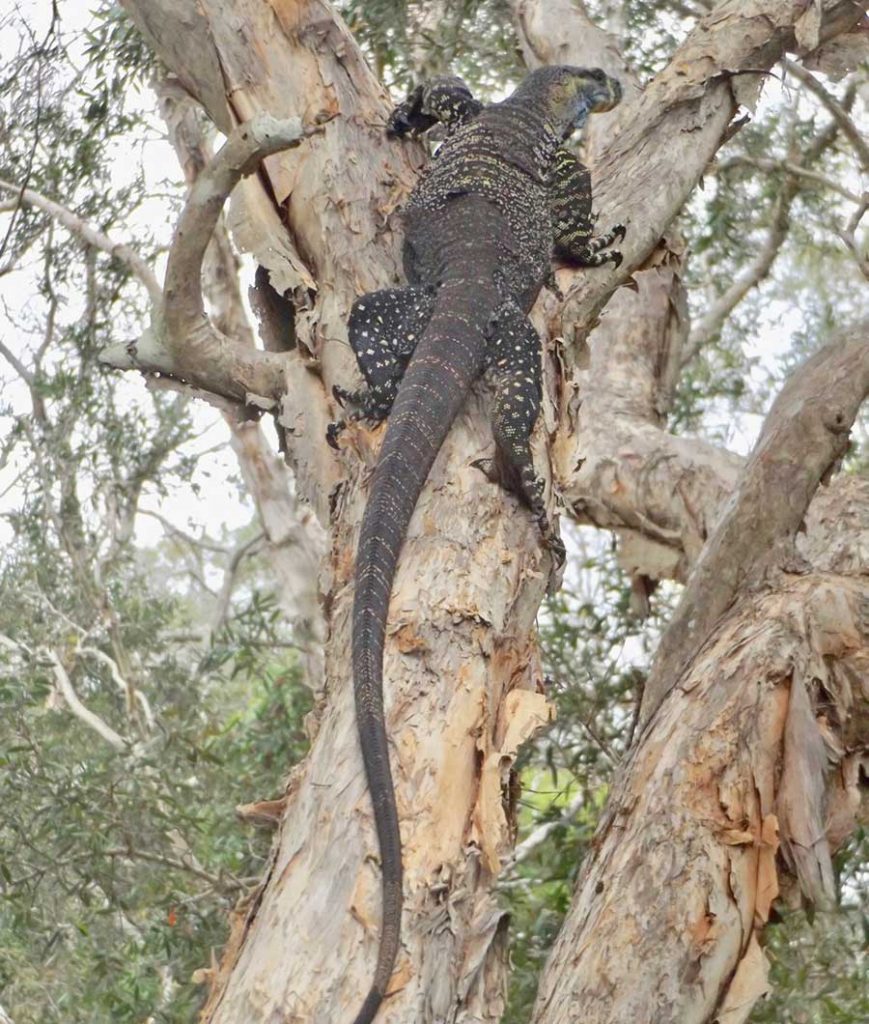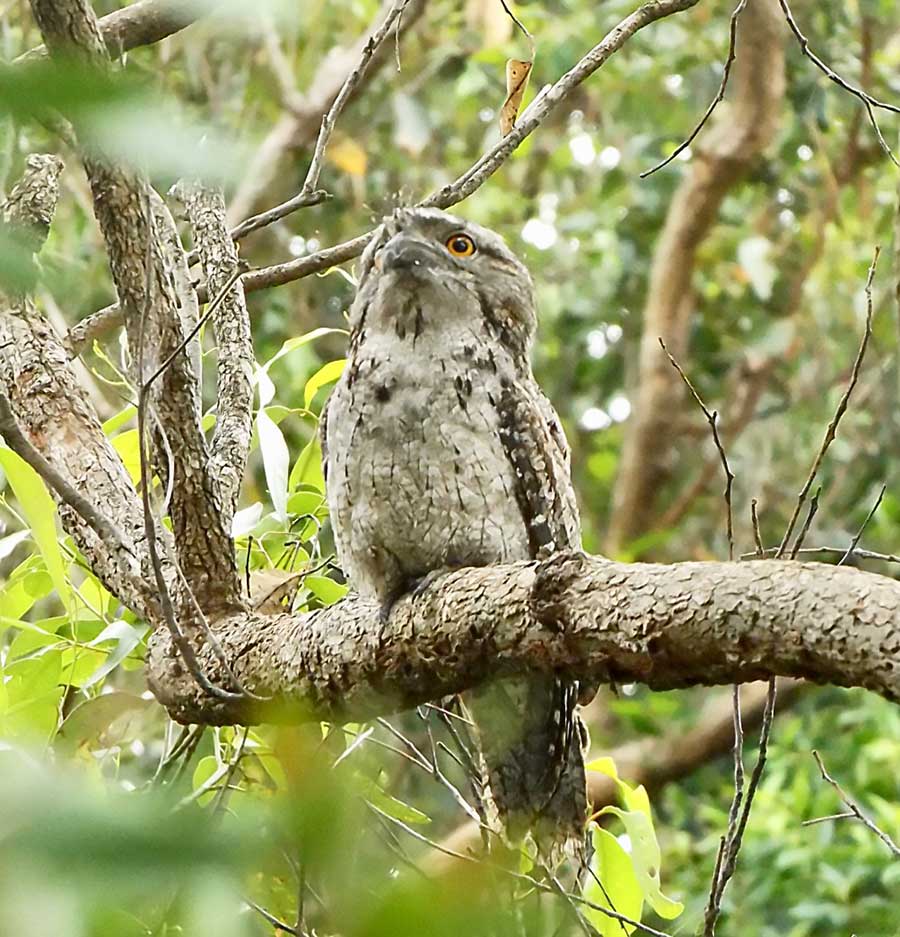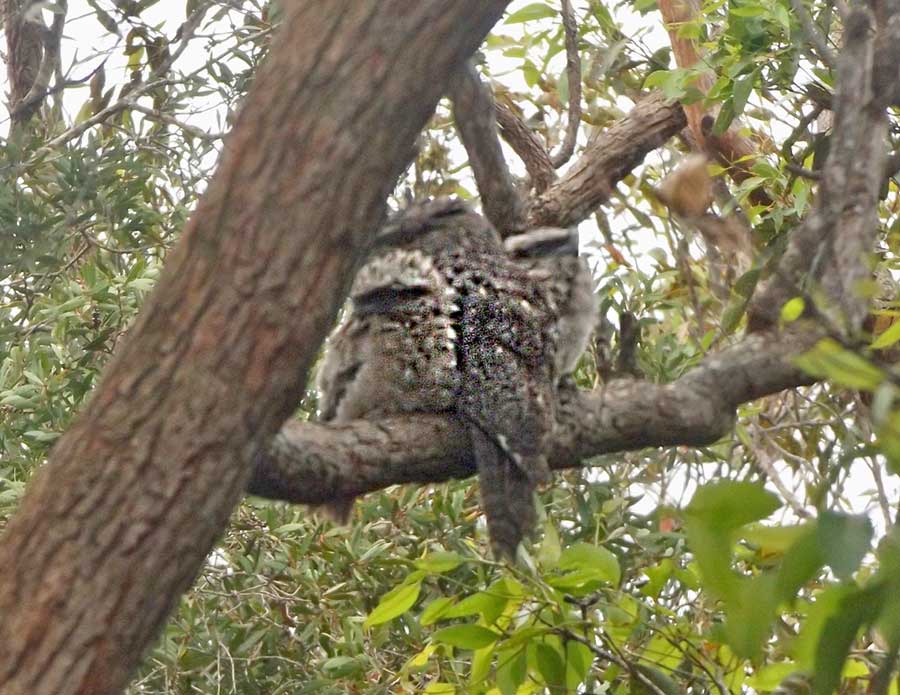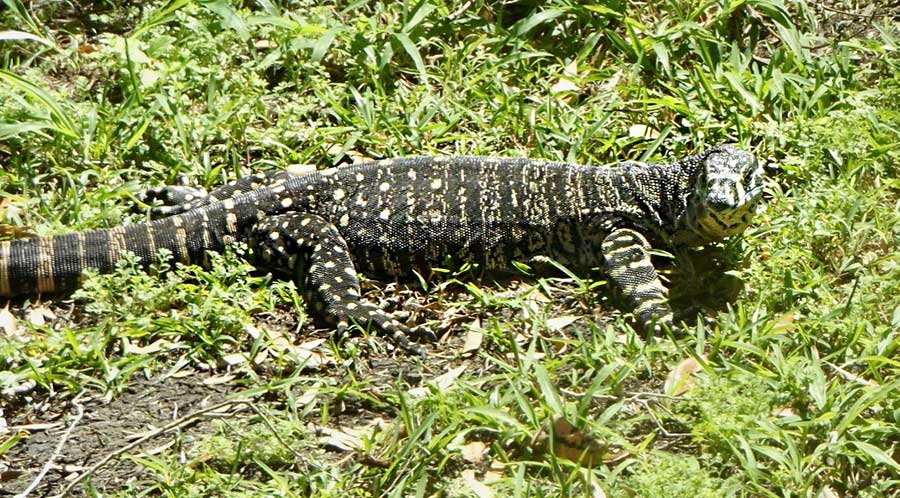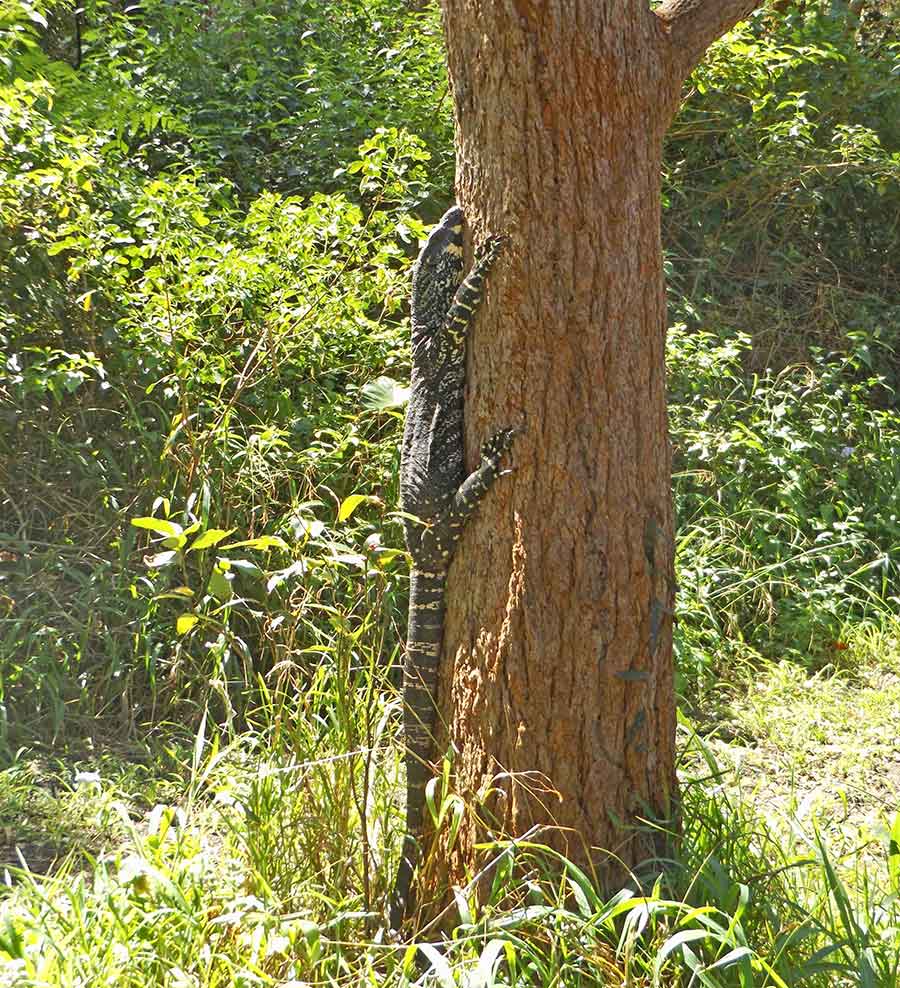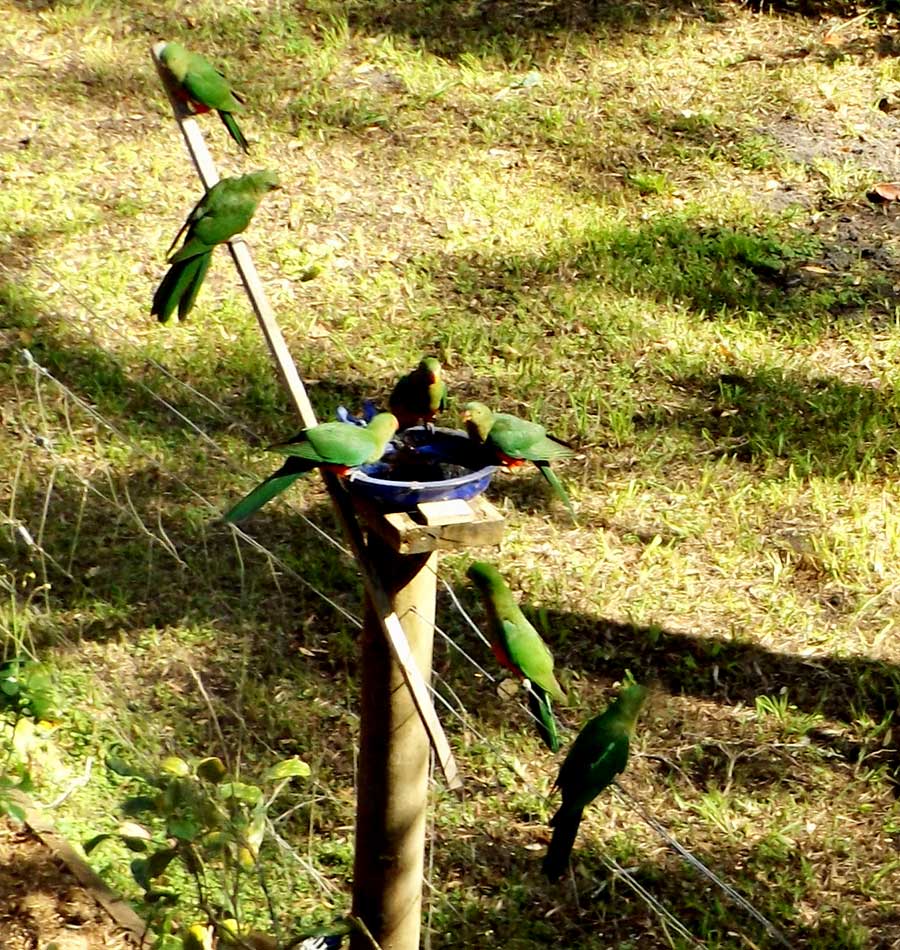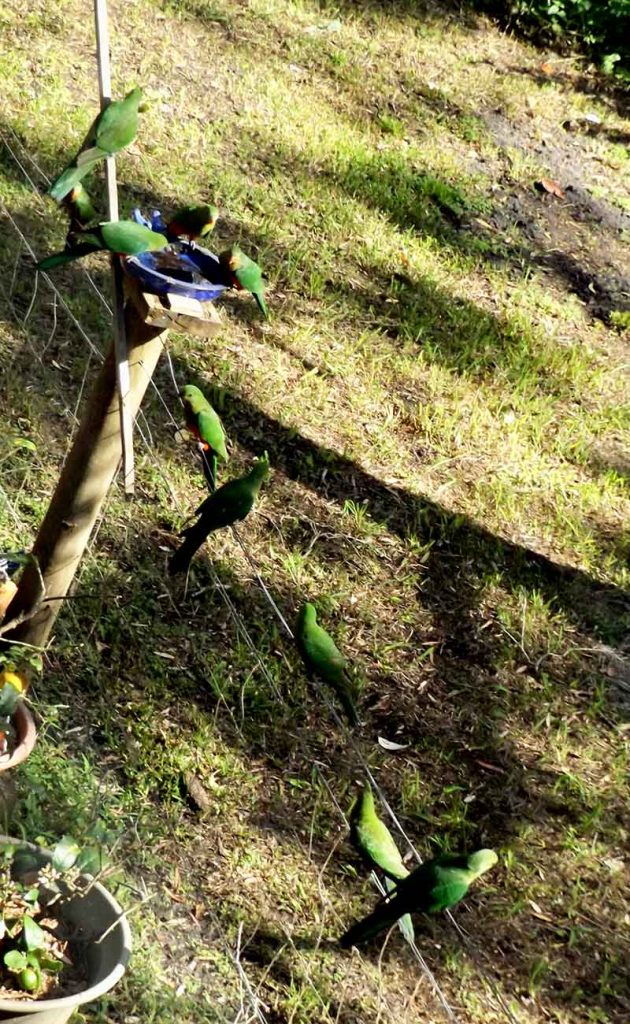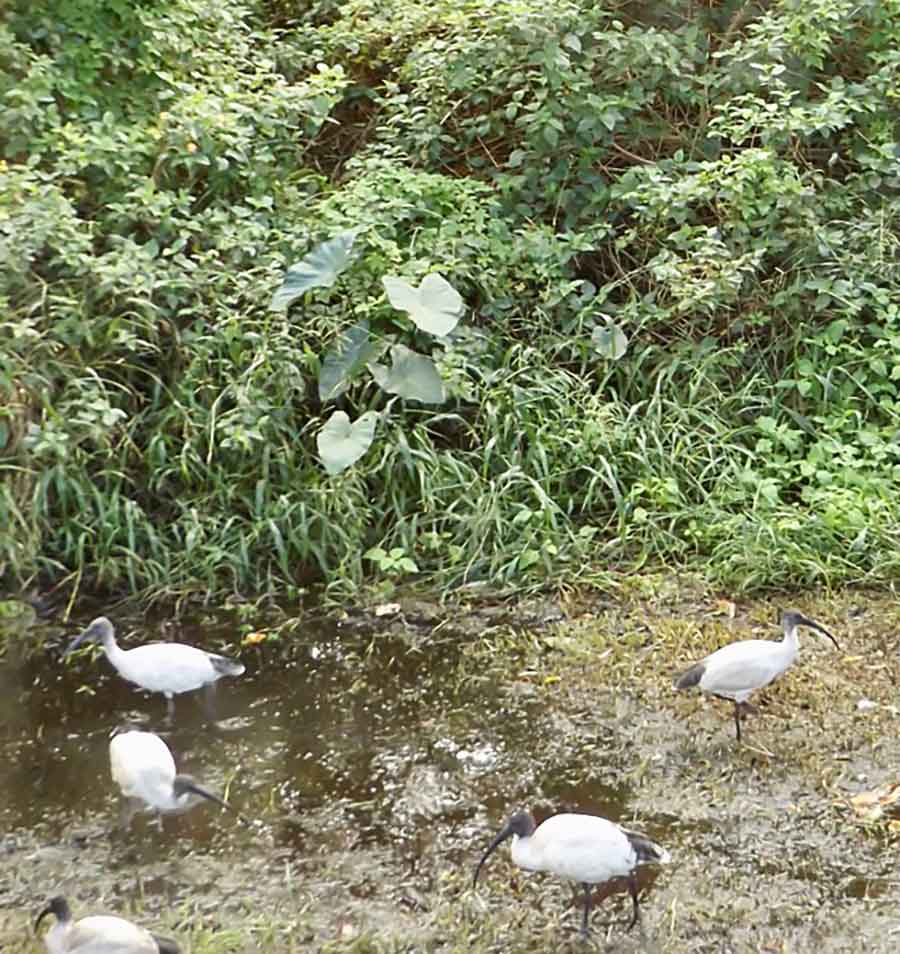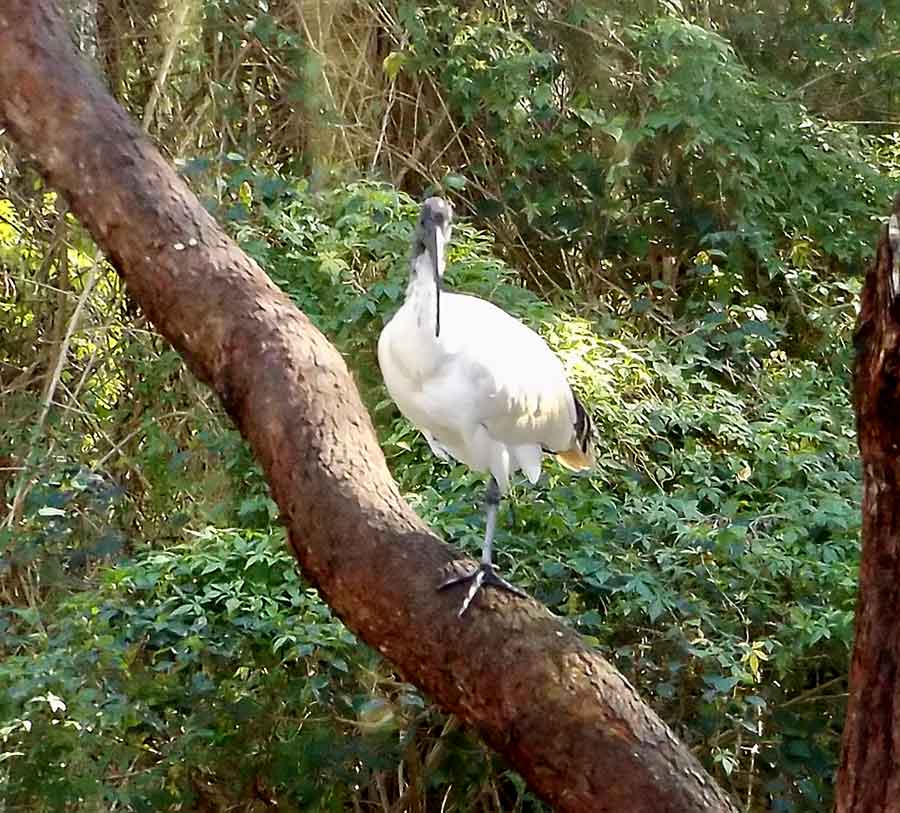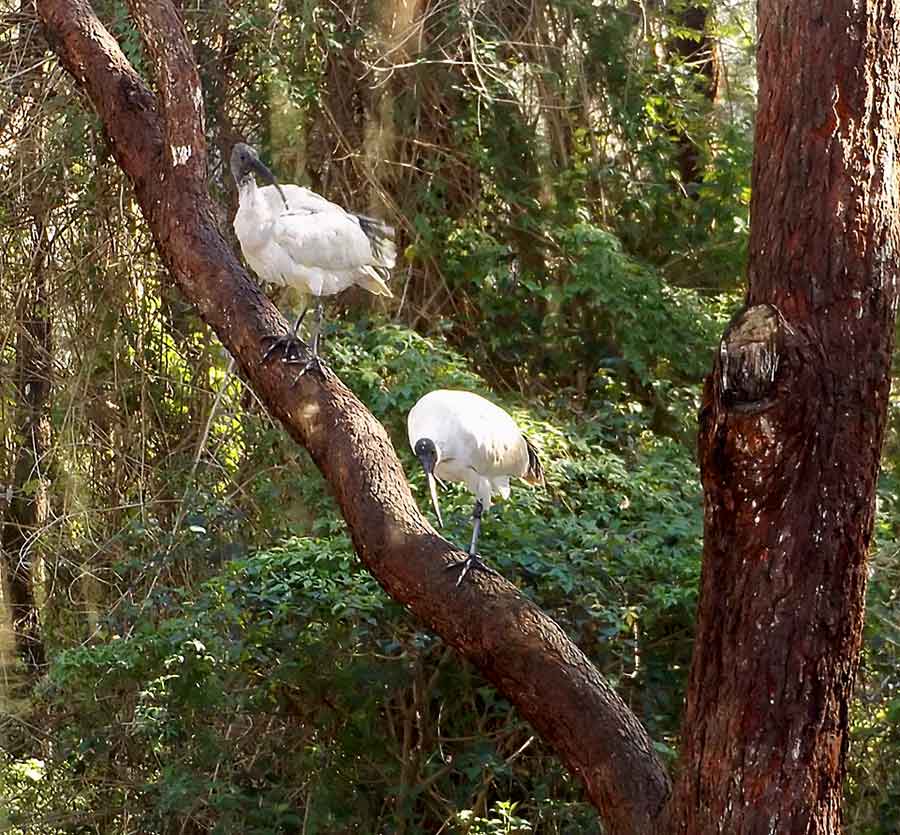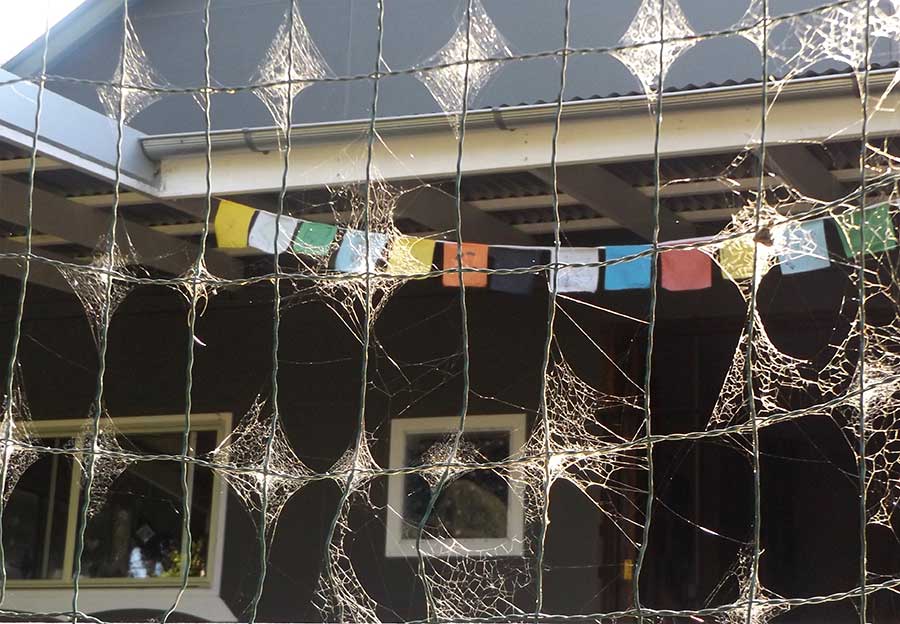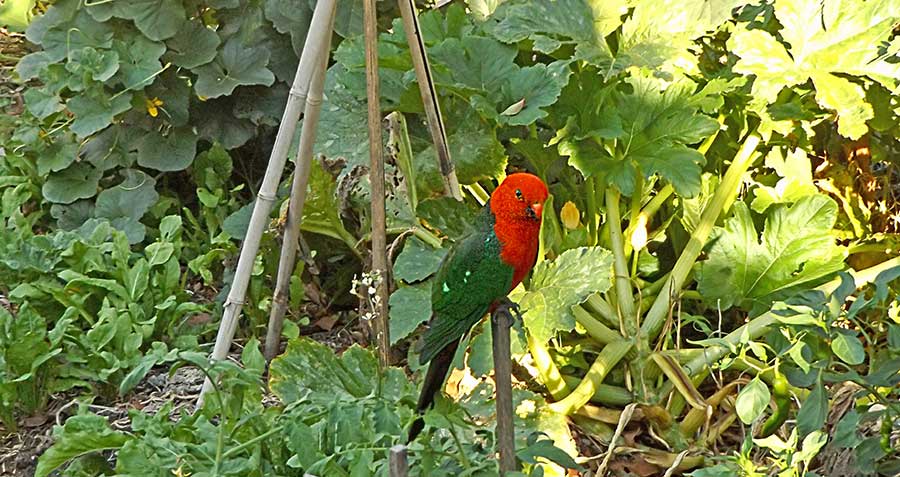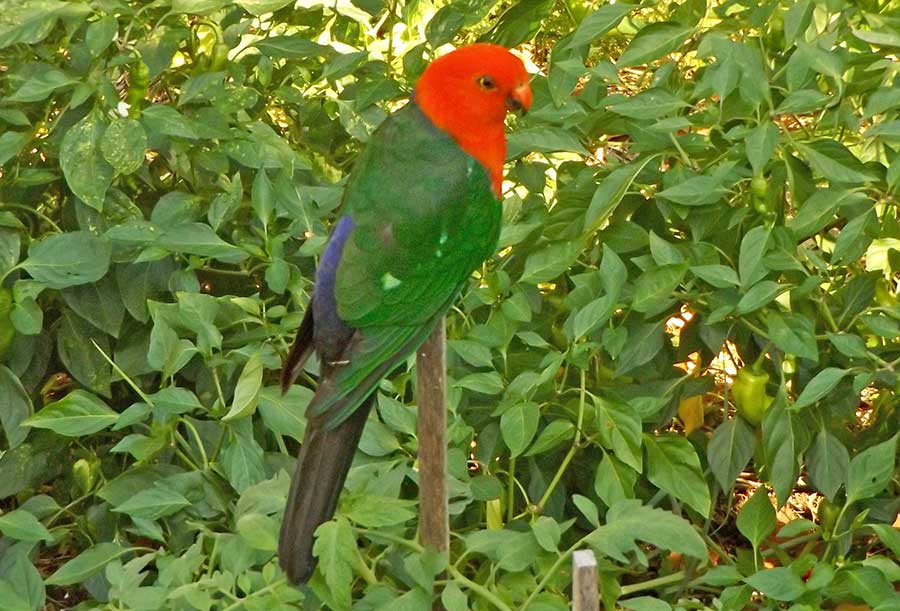It’s difficult not to be distracted by the wildlife here, even if I don’t leave my desk. At this second floor height what’s going on amongst the trees is ‘in your face’, so to speak.
Like this goanna, who decided to climb up and laze on this branch for about a half hour; not after any nest of baby peewees, just hanging there. When done, it turned around – always a heart-stopping manouevre to watch — and slowly gripped its way down, its tail almost overtaking it.
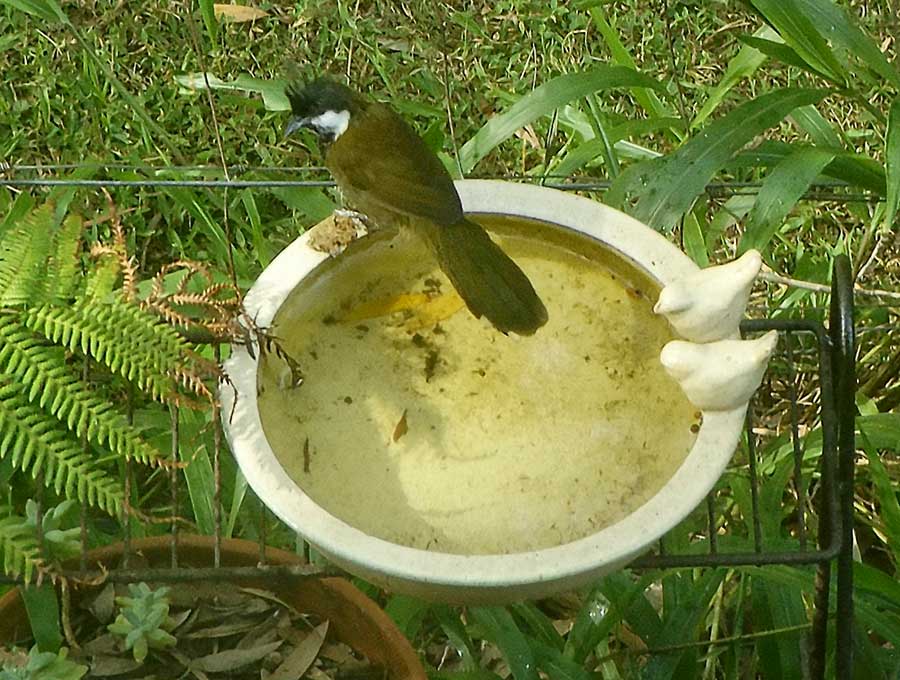
Odd noises often alert me to activity closer to the ground, as in the various birdbaths. This time it was a repetitive soft bird call, and when I checked, there were two birds I had not seen here. Eastern Whipbirds, I learn, and I had certainly heard the males’ whip crack before.
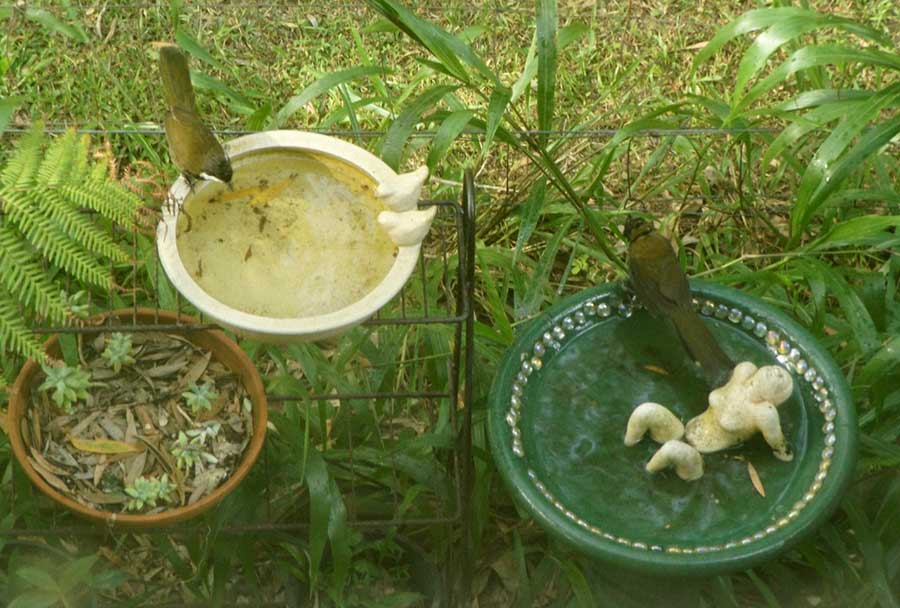
The female’s call is described as ‘choo-choo’, with which I probably wouldn’t agree, but if they visit again I will listen more closely and come up with a more fitting one. Another book says ‘chuckles and whistles’ — quite an art, summing up bird talk…
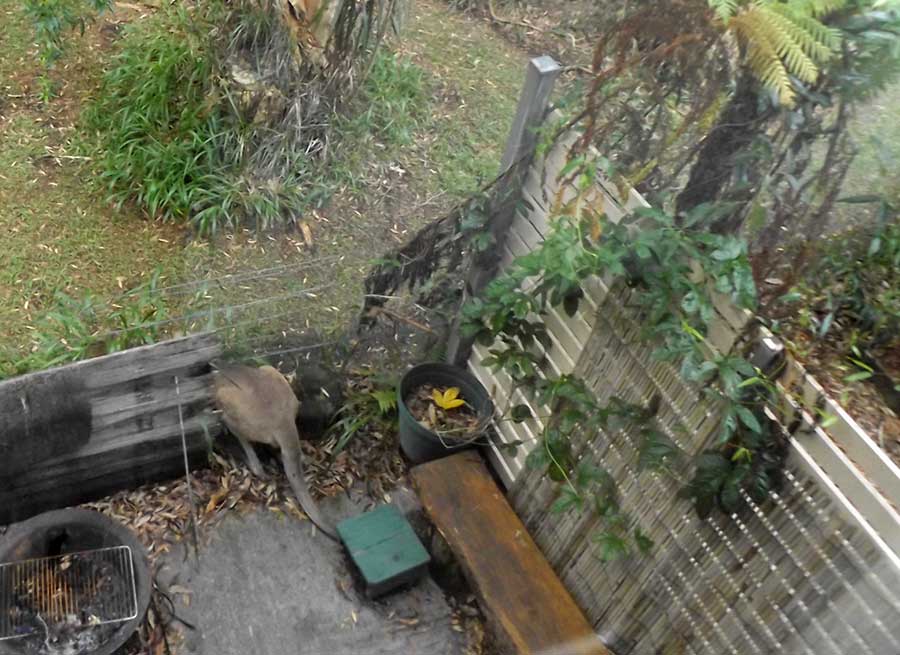
A louder racket made me stand and look down into my small back yard where an Eastern Grey Kangaroo had pushed its way in beside the pigwire fence and was trying to return — but clearly couldn’t find or use the same route.
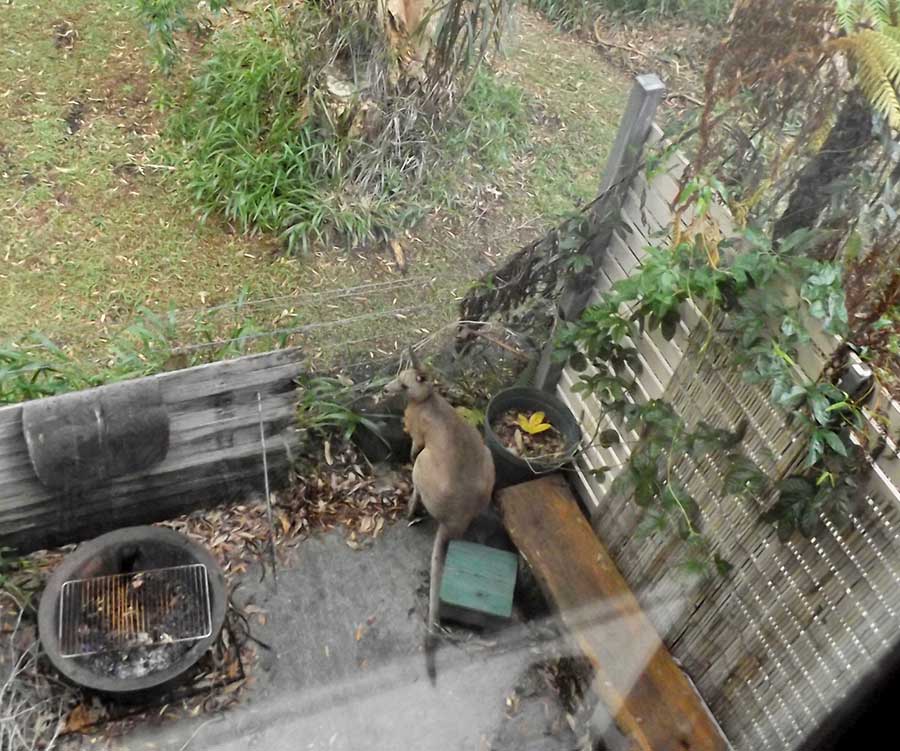
I was worried about him panicking as he pushed fruitlessly at the fence, but he was no fool. Having realised that no part of his body beyond his head would go through the wire squares, he quickly checked out the rest of the yard, then took a running jump and went over the fence.
Life is never dull here, even through my windows.
